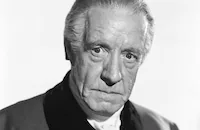Gable plays a newspaperman investigating a bootlegging operation run by Wallace Beery and cohorts. Harlow is Beery's moll, who switches allegiances after Gable enters the picture. In a part miles removed from his sympathetic role as Judge Hardy in the Andy Hardy series, Lewis Stone plays a booze-soaked lawyer who advises the bootleggers. Both Gable and Harlow were considered up-and-comers at this time, and their roles are subordinate to top-billed Beery in a brawling, angry performance as a character loosely based on Al Capone.
The Secret Six was the first major movie at MGM for Harlow, working on loan-out from Howard Hughes, to whom she was then under contract. Although her scenes with Gable struck sparks, both future stars were shy and retiring, and their friendship was slow to develop. "Neither of us knew much about the business," Gable would later recall. "At the end of every scene she would ask me, 'How'm I doing?' And I would ask her the same." It was a year later, with Red Dust, that Gable and Harlow emerged as MGM superstars and cemented a relationship which became so close that many in the film colony believed them to be lovers. But Gable's friends would maintain in later years that the two were "only playmates who understood every nuance of each other."
Harlow's relationship with Beery, with whom she also appeared in Dinner at Eight (1933) and China Seas (1935), was just the opposite. "The two detested each other," writes Eve Golden in her Harlow biography, Platinum Girl. "Unlike Jean, Beery in private life was very much like Beery onscreen: violent, coarse, and outspoken, greatly talented but a bane to costars and employers alike... A veteran of every form of show business, he did not take kindly to sharing the spotlight with an untested upstart, and his natural contempt for women asserted itself." Despite Beery's obnoxious behavior during the filming of The Secret Six, Golden writes, Harlow went gamely on with her scenes, "choking back her embarrassment."
Director: George W. Hill
Screenplay: Frances Marion
Art Direction: Cedric Gibbons
Cinematography: Harold Wenstrom
Costume Design: Rene Hubert
Film Editing: Blanche Sewell
Principal Cast: Wallace Beery (Louis Scorpio), Lewis Stone (Richard Newton), John Mack Brown (Hank Rogers), Jean Harlow (Anne Courtland), Marjorie Rambeau (Peaches), Paul Hurst (Nick Mizoski), Clark Gable (Carl Luckner), Ralph Ralph Bellamy (Johnny Franks).
BW-84m. Closed captioning.
by Roger Fristoe






























